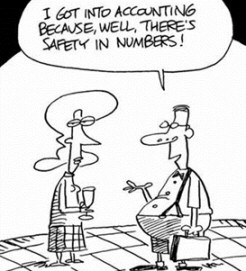

The next time you send out your employee newsletter, consider sharing some of these tips. Summer is too short to miss due to a safety mishap that could have been easily avoided. (And they starve the beast.) Incorporate both of these routinely in your lessons.ĭo any of these especially resonate with you? How do you create a safe learning environment for your students? Please share your thoughts and ideas with us.Before your employees take off for their summer vacations (probably the first vacay in a while!), be sure to share this list of helpful summer safety tips. We might ask a strategic question, inquire about the group's project, or simply listen.Ģ0. But joining a group of children at their table takes us off stage and let's us, even just for a few moments, become a member of the group. Sitting in a chair made for a child is not the most comfortable thing for an adult. Maybe a vacation, a massage, watching a TED Talk, or even changing the level of grade you teach will help re-kindle the flame between you and teaching when you are in a slump.ġ9. Joy can be contagious, but so too can misery. Students, no matter how young, know when a teacher is not happy. If we start an assignment with, "You will have three choices," kids may even get excited and are often much more willing than when we say, "The assignment is." By giving kids choices, we send a message that we respect their decisions.ġ8. Sometimes, when tensions are high, like during testing or when crazy things are happening out in the world or on campus, we need to laugh together. The message this sends: Learning doesn't have to always be so serious, nor do we. This is a chance for us to ask rather than tell: "What might be some things you can start doing so you complete your homework on time? How about I write them down as you tell them to me?"ġ6. It's so much better when ideas and solutions come from the student. Give Kids a Chance to Problem Solve on Their Own. The more smiles we offer to students, the more we will receive.ġ4. Let the children see those pearly whites often and genuinely. The antiquated saying in the teaching profession is wait until Christmas to smile. They need evidence to believe they are safe in each classroom.ġ3. Students need to know there's a consequence for those serious infractions. A consequence must proceed a non-negotiable. If we are asking kids to write and talk about times they have felt scared, alone, confused, etc., we need to be willing to do the same.ġ2. You see me struggle as I am drafting a poem or letter, and you see me contemplate new words, cross-out old ones, and take chances as I revise. I don't just tell you this and grade you on your writing, I write side-by-side with you. If tension is building between a couple of students, create time and space for them to talk it out while you mediate.ġ0. Also, circulating gives you great opportunities to overhear a student sharing an idea or question that you can use with the whole class.ĩ. Mingling lets you monitor their work, yes, but it also gives you a close view of any tensions or negative energy brewing with groups or between students. Take Every Opportunity to Model Kindness. Step right outside the door and take a few breaths. Once a teacher loses it with a class or student, it takes a long time to rebuild that feeling of safety and trust within those four walls. You see my facial expressions as I struggle to understand something difficult and you see when I feel emotion at a sad or funny part. I don't just tell you this and grade you on how much you read, I read side-by-side with you.


Does anyone else know or might they like to look that up for us?" is powerful stuff.ĥ. Students appreciate when we show our humanity. Tackle name calling head on or else kids won't feel safe to be themselves, let alone learn.Ĥ. This resulted in an immediate consequence (a call to the dean and removal from the classroom that day). Along with classroom rules and procedures, students must know non-negotiables right out of the gate. That said, if informational posters are needed, ask your students to create them.ģ. When they look around and see their own writing and thinking, they certainly experience a higher level of comfort than if they see store-bought posters. When displays of essays, poems, projects, and exams dominate the walls, there is student ownership of the room.


 0 kommentar(er)
0 kommentar(er)
